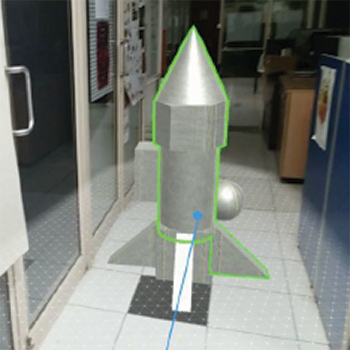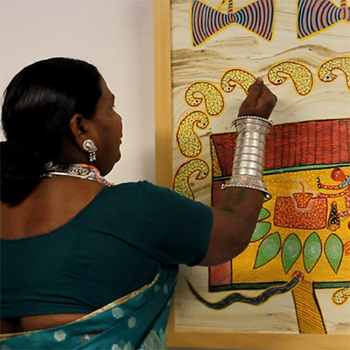Thesis
Batch 2022
(2 items)
ThesisBatch 2022
(2 items)
(2 items)
by Pratiti Sarkar; supervisor/s: Prof. Jayesh S. Pillai
The Indian schools in Tier 2 and Tier 3 cities have technology-driven classrooms. However, learning subjects such as (but not limited to) mathematics, science, and history that include abstract concepts often becomes challenging for students due to the requirement of visualising skills, a lack of learner-content control, and frequent disengagement. This leads to the requirement of a student-centered technological pedagogical tool. According to recent research, Augmented Reality (AR) is one of the emerging technologies for student-centered learning that superimposes computer-generated virtual objects onto the real world in real time. Moreover, the ubiquity of mobile phones has led to increased integration of AR and mobile learning. In the context of Indian schools, this technology is still being explored and is yet to be added to the benefits of classroom teaching. Hence, there is a need to identify the ways in which AR technology can be designed and used in Indian schools to provide an interactive, immersive, and enhanced learning experience. To create such a classroom-based Augmented Reality Learning Experience (ARLE), the potential design strategies have to be identified and applied.
This dissertation advances our understanding of these problems in two ways: (1) to characterise the design strategies of an ARLE incorporating the three dimensions of learning, i.e., content, incentive, and interaction (Illeris, 2003), and (2) to apply the identified design strategies in creating an ARLE. We have used design-based research (DBR) as the overarching research approach to design and iterate on the potential solution. DBR is a research methodology that aims at the development of educational interventions or learning environments through iterative cycles of analysis and exploration, design and development, and evaluation and reflection. We carried out seven research studies (N = 235) using a mixed-method approach in two cycles of DBR.
by Debjani Mukherjee; supervisor/s: Prof. Mazhar Kamran & Prof. Disha Nawani
The artificial divide created by formal institutions such as schools makes us believe that learning primarily happens within the confined walls of a classroom. This assumption, besides certifying learning of a certain kind, inadvertently disowns learning practises in other informal contexts, past or present. The study endeavours to celebrate 'learning of an art form," which is perhaps more spontaneous, natural, and organic, with the intent to draw pedagogic insights that might be later adapted to informal and formal learning spaces as well. The choice of the Bhil artist community in India was deliberate and conscious, as it makes for an interesting case study where their artforms, which are in transition, reflect both continuity and discontinuity in their beliefs, relationship with art, and art practises from the past. On the one hand, their ritualistic Pithora artform is essentially traditional and confined within the community, and on the other, the Bhil art is also emerging as a commercial artform. This transition is comparatively recent and situates indigenous art in the present by addressing the dynamism and evolution of the art itself.
The research objective thus has two aspects: understanding the nature of the human-art relationship and the pedagogic approach to its practise. The research posed several challenges, particularly in identifying a particular theoretical lens that would do justice to the above research objective. Since the artform had various dimensions to the study, I have used critical insights from the works of several thinkers and scholars working in diverse areas. I have used Durkheim’s lens (1912) to study the belief system of the community linked with art, Paniker’s lens (1972) to interpret the oral narratives guiding the art, and Dehejia’s lens (1990) to understand the visual narratives. Further, I have used the elements and principles of art to analyse the visual form of the art.
For a study of this kind, ethnography—the flesh and blood approach, which entails immersion in the field and uses participant observation as a central tool—was an obvious choice. Given the complex nature of the study and its location across multiple sites, involving several artists and respondents, the methodological approach adopted in the beginning also kept evolving. The research tools were extended to involve structured, unstructured, and group interviews and workshops. Visual ethnography helped in documentation through photographs, videography, and sketches. Over and above this, a research methodology was designed such that the researcher herself started learning the indigenous art from a senior Bhil artist, Bhuri Bai1, and documented the process through visual ethnography and reflective research. This ‘experiential ethnography," along with reflective documentation, later became the critical tool for data collection and analysis.

